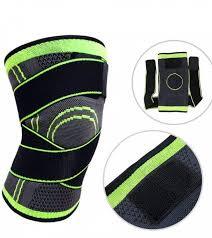MyWorldGo
Choosing the Right Knee Support for Your Body Type and Gym Goals
Blog Information
- Posted By : Alex Ben
- Posted On : Nov 05, 2024
- Views : 14
- Category : General
- Description : Choosing knee support isn’t a one-size-fits-all decision.
- Location : Unit 243, 339 Wanstead Park Road Ilford
Overview
- Choosing knee support isn’t a one-size-fits-all decision. Different types of Knee Support Gym serve unique purposes, and your body type, workout intensity, and specific goals will play a big role in the best choice for you. Here’s a guide to help you select knee support that matches your needs and provides the ideal blend of stability, protection, and comfort.
1. Consider Your Body Type and Knee Structure
The first step in selecting knee support is evaluating your body type and knee structure. Larger individuals or those with longer limbs may need extra support and a more durable material to prevent wear. Knee support should fit snugly without cutting into the skin or restricting blood flow.
A well-fitted knee support ensures that it stays in place during movements. For those with wider thighs or calves, consider knee support brands that offer different fits and sizes to accommodate broader structures without compromising stability.
2. Identify Your Gym Goals and Workout Type
Your choice of knee support will also depend on your workout intensity and fitness goals. Here are some typical scenarios:
Heavy Lifting and Strength Training: If you’re a powerlifter or strength trainer, knee wraps or braces that offer firm support and stability are ideal. These types are designed to minimize joint movement, protecting against strain during squats or deadlifts.
High-Intensity Interval Training (HIIT): For HIIT workouts that involve both strength and cardio, opt for a flexible knee sleeve. These provide enough compression without restricting dynamic movements.
Endurance Cardio and Running: Endurance workouts require knee support that’s lightweight and breathable. Look for knee sleeves made of thinner material with good moisture-wicking properties to keep your knees stable without overheating.
3. Choosing Between Knee Braces, Sleeves, and Wraps
Understanding the function of each type of knee support is essential:
Knee Braces: Ideal for people recovering from injuries, knee braces offer external support to prevent joint movement. They’re often used for high-impact exercises or for individuals with existing knee instability.
Knee Sleeves: Great for overall knee protection and compression, sleeves are versatile and suitable for light to moderate exercises. They help improve blood flow, which is beneficial during longer workouts or cardio.
Knee Wraps: Primarily used in powerlifting, wraps provide a tight and adjustable fit, adding stability during heavy lifts. They’re best suited for advanced lifters who need extra support during max-weight exercises.
4. Material and Breathability
Different materials offer various levels of durability and comfort. For example, neoprene is common in knee supports as it offers firm compression and stability. However, it’s less breathable, which may not be ideal for extended wear or endurance workouts. Materials like nylon and spandex are breathable and lightweight, making them more suitable for cardio sessions.
If you’re prone to sweating or plan to wear Knee Support Gym for longer periods, look for materials that offer moisture-wicking properties. Breathable fabrics help regulate temperature, reducing the risk of skin irritation.
5. Compression Level: How Much Support Do You Need?
The right level of compression depends on your needs. High-compression knee supports are beneficial for reducing swelling and providing a firm grip, which is useful for people lifting heavy weights. Moderate compression is often enough for daily workouts, as it offers support without restricting movement.
Consider knee support with adjustable straps if you’re unsure of the right compression level. This allows you to customize the tightness depending on your workout intensity.
6. Ensuring Proper Fit and Comfort
Comfort is essential when choosing knee support. It should fit snugly without pinching or sliding down. Many brands offer sizing charts; measure around the center of your knee to find the most accurate size. A well-fitted knee support should remain in place during movements and be comfortable enough for long-term wear if necessary.
7. Trial and Error: Testing Your Knee Support
Once you’ve chosen knee support, test it during a workout to see how it feels. Try a few warm-up sets to assess if it provides enough stability and doesn’t restrict your range of motion. Knee support should feel natural and comfortable, giving you confidence in your movements.
If you find that it shifts or causes discomfort, consider adjusting the fit or trying a different type. Knee support should complement your exercise routine, so it’s worth spending time to find the one that fits best.
Conclusion
The right knee support can make a significant difference in your gym performance and joint health. By considering your body type, workout goals, and support needs, you can find knee support that keeps you comfortable, stable, and safe. With the right fit, material, and compression, you’ll be better equipped to reach your fitness goals without compromising knee health.
